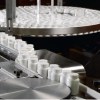
Location: Senate Room 1, Leeds Humanities Research Institute, 29-31 Clarendon Place, Leeds, LS2 9JT
Date: 3-5pm, Thursday 27th April
Augmenting the Body is an interdisciplinary medical humanities project based at the University of Leeds, exploring questions of disability, bodily extensions, care and the posthuman. Work and the Posthuman is the fourth seminar to be presented in the Sadler Seminar Series. This series aims to explore the ways cultural and theoretical ideas of embodiment meet the practicalities of engineering design and product use, to suggest critical avenues that can lead to the development of better adaptive/rehabilitation technologies.
Reading Disability in a time of posthuman work – Stuart Murray (English Dept, Leeds)
This presentation will explore contemporary culture’s seeming obsession with ideas of speed, immediacy and efficiency in a time of 24/7 work, and where disability is positioned within such concepts. It will then look at two contemporary novels (Joshua Ferris’s The Unnamed and Michael Faber’s Under the Skin) that, through the representation of disability, offer critiques of posthuman work economies. In both texts, ideas of a singular and coherent body or self, and a humanist ‘proveable identity’, are revealed to be unsustainable because of the manner in which disability interacts with expectations of work.
Augmentation in the operating theatre: The impact of robotic surgery on teamwork – Rebecca Randell (School of Healthcare, Leeds)
This presentation will report findings from a recently completed study looking at the impact of robotic surgery on teamwork in the operating theatre. The robot provides the surgeon with a magnified, 3D view of the surgical site, more precise movement through tremor elimination and motion scaling, and increased freedom of movement. Robotic surgery also allows the surgeon to do more: with the provision of additional arms, the surgeon has control of the camera and can undertake retraction, both of which they are unable to do in a keyhole operation. However, this has implications for the roles of other members of the surgical team. The robot also takes away resources usually available in surgery, the surgeon’s position in the robot reducing awareness and presenting challenges for communication.
For any further information, please contact Sophie Jones, Research Assistant – Augmenting the Body: Disability, Care, and the Posthuman.

